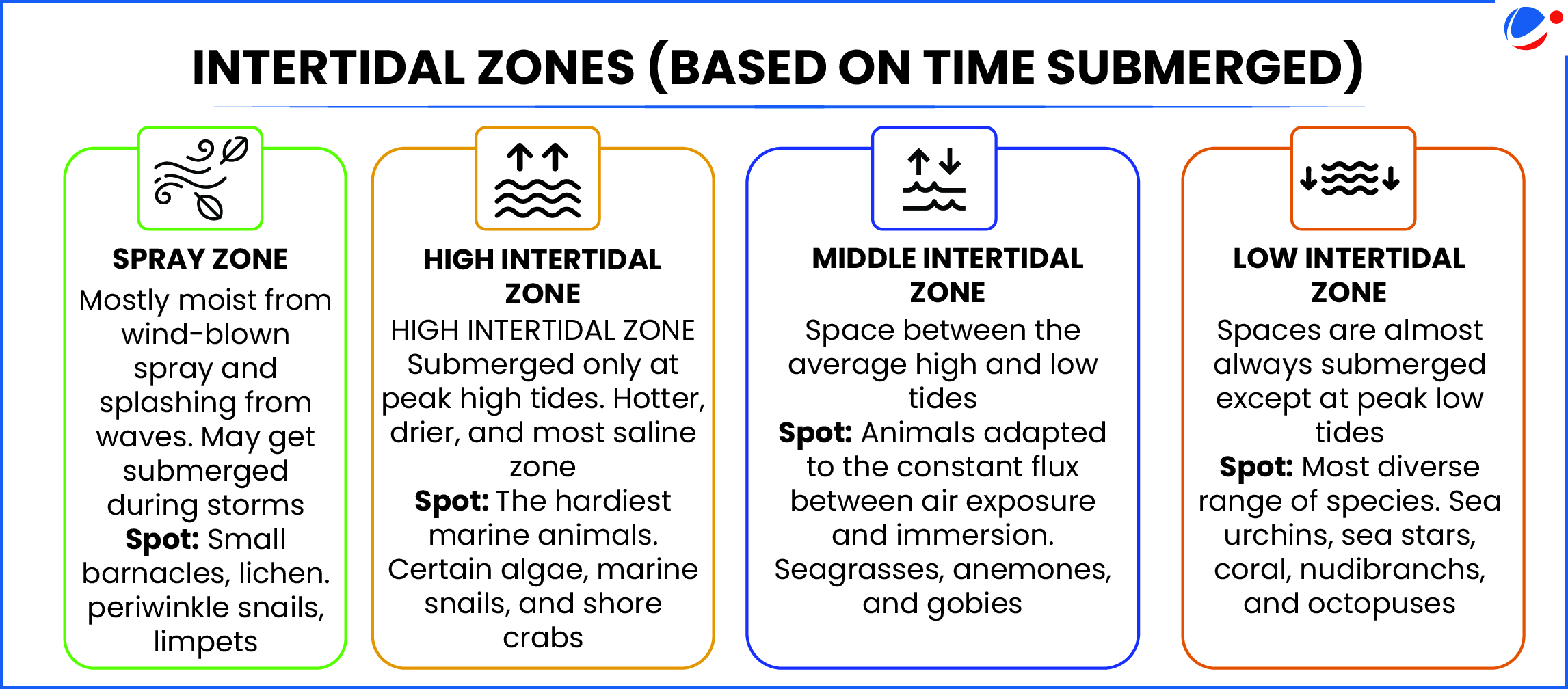Coastal Conservation Foundation and the East Coast Conservation Team jointly conducted the Intertidal Bioblitz, a citizen science initiative for documenting the biodiversity of India’s intertidal zones.
- It recorded a flatworm – Pseudoceros bifascia – for the first time from mainland India (Andhra Pradesh Coast).
About Intertidal Zone
- The intertidal zone marks the dynamic boundary where ocean meets land - a unique area that alternates between being submerged during high tide and exposed to air when the tide retreats.
- It is an extreme ecosystem and any species living in the intertidal zone must be able to survive changes in moisture, temperature, and salinity and withstand strong waves.

Importance of Intertidal zones
- Essential breeding grounds for marine life, providing protected nurseries for juvenile fish, crustaceans, etc.
- Acts as a natural buffer against coastal erosion, helping absorb wave energy and stabilize shorelines.
- Important source of primary production and a conduit for energy, nutrients and pollutants between terrestrial and marine environments.
- Significant source of carbon sequestration.
Threats to Intertidal Zones
- Climate change: Intensified storms, rising seas, and temperature increase leads to die-offs and threatens entire food chain.
- Human disturbances: Oil spills, beach tourism, harvesting activities, pollutants from terrestrial, airborne and marine sources, and shoreline developmental activities.



